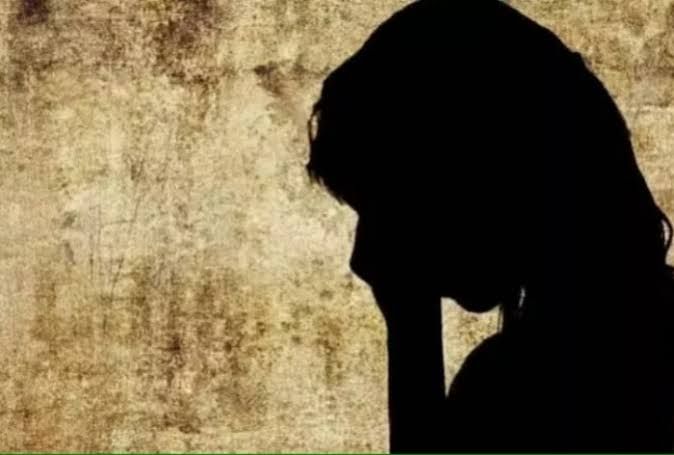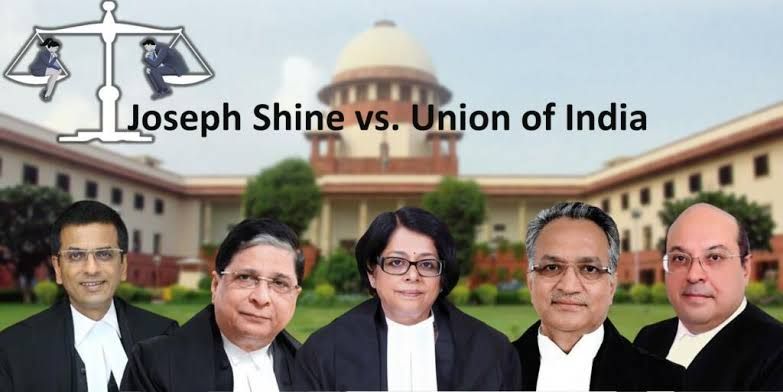“Seeking Justice: The 1992 Ajmer Rape Scandal Case”

- Introduction –
The 1992 Ajmer Rape Case remains a significant and distressing chapter in Indian criminal history, leaving an indelible mark on the nation’s collective conscience. This case revolves around a horrifying incident that unfolded in Ajmer, Rajasthan, where a brutal act of sexual assault took place. The incident sent shockwaves throughout the country, exposing the deep-rooted issues of gender-based violence and the urgent need for societal introspection and legal reforms.
The details of the case are deeply disturbing, and the subsequent legal proceedings were closely followed by the public. The incident sparked widespread outrage and ignited discussions on the prevailing patriarchal norms and the safety of women in society. It served as a wake-up call, prompting a renewed focus on addressing the systemic issues that perpetuate such crimes.
The 1992 Ajmer Rape Case stands as a stark reminder of the challenges faced by victims of sexual assault and the long road to justice. It continues to serve as a catalyst for ongoing efforts to improve legal frameworks, support survivors, and create a safer environment for all. By examining this case, we can gain a deeper understanding of the complexities surrounding such crimes and the collective responsibility to prevent and address them.
- Background and Context –
The individuals implicated in this case are the renowned Chishti siblings, Farooq and Nafis, who are members of the extended family connected with the distinguished Ajmer Sharif Dargah. These pair had previously been powerful figures within the Youth Congress.
Both Farooq and Nafis stand accused of luring numerous minors, as well as school and college-aged girls, into a trap, subsequently subjecting them to threats and blackmail over an extended period of time. The allegations also include that they repeatedly committed acts of gang rape against these victims. As per the given reports, Farooq and Nafis Chishty, who are part of the esteemed Khadim family who are tasked with overseeing the administration of the Ajmer Sharif Dargah, were purportedly leading a group of young men in these abhorrent activities.
Their alleged strategy entailed attracting, gang-raping, and coercing young women into silence at a remote farmhouse. Subsequent inquiries uncovered that Farooq Chishty had cultivated a relationship with a young female student from Sophia Senior Secondary School in Ajmer. Utilizing this association, he manipulated her into introducing him to her classmates. These unsuspecting young women were subsequently enticed, individually, to a secluded farmhouse where they tragically became victims of coordinated gang rapes, perpetrated by the Chishty brothers and their accomplices.
- The Incident –
The scandal was brought to public attention through the brave efforts of journalists Deenbandhu Chaudary and Santosh Gupta from the Hindi newspaper Dainik Navajyoti. Their investigative article, entitled “Daughters of prominent leaders fall prey to blackmail,” unveiled a horrifying reality. Young women, enticed by assurances of friendship or presents, were taken to remote locations where they were repeatedly violated by a group of younger men. The chief culprits, Farooq and Nafis Chishti, originated from the esteemed Khadim family, who were responsible for safeguarding the respected Ajmer Sharif Dargah.
The execution of their despicable crimes was as cold-blooded as it was strategic. Per a disclosure made by ‘Dainik Navjyoti’, a reputable news source, it has been made known that in excess of 250 individuals, ranging in age from 11 to 20 years, have been reportedly affected by this certain incident. By manipulating their positions of authority and influence, the men were able to gain the trust of their unsuspecting victims. They then deceived them into traveling to secluded places such as a farmhouse or bungalow, under the pretext of friendship or promises of gifts. Once secluded, the women were subjected to merciless gang sexual assaults, captured on film. These recorded acts served as tools of coercion, forcing the victims into silence.
- Legal Proceedings –
The editor of Navjyoti newspaper, Deenbandhu Chaudhary, revealed that local law enforcement authorities were aware of a scandal involving widespread exploitation and blackmail almost a year before the story broke. However, they allowed local politicians to stall investigations, prompting the newspaper to publish the story in an attempt to push the local administration into action. The police eventually lodged a First Information Report (FIR) against eight of the accused, and further investigations led to a total of 18 men being charged. However, tensions ran high in the town for several days as people took to the streets to protest.
The scale of the exploitation soon became apparent as reports of widespread blackmail and abuse emerged. Protests and a three-day bandh were imposed, and retired Rajasthan Deputy General of Police, Omendra Bhardwaj, who was the Deputy Inspector General of Police in Ajmer at that time, stated that many more victims would have come forward had it not been for the social and financial influence of the accused, which stifled their efforts to seek justice. Furthermore, it was revealed that many young and vulnerable victims had already committed suicide, adding to the severity of the situation. On January 4, 2012, the Rajasthan police arrested Saiyed Saleem Chishtee, 42, one of the accused from Khalid Mohalla in Ajmer town.
All nineteen individuals implicated were formally accused of abduction. The primary suspect, Farooq Chishti, presided over the Ajmer Youth Congress. Nafis Chishtee served as the vice president of the Ajmer Indian National Congress, while Anwar Chishtee held the position of Joint Secretary of the same organization. Additionally, the court passed sentences to Moijullah (also known as Puttan), Ishrat Ali, Anwar Chishtee, and Shamshuddin (alias Meradona). Suhail Chishtee, a fugitive, captured after hiding for 26 years, while absconder Salim Chishtee was arrested in 2012.
Building a successful case against those accused of widespread exploitation and blackmail in Ajmer town, Rajasthan, proved difficult due to the reluctance of many victims to come forward and report the offenses committed against them, according to police and NGOs focused on women’s rights. However, photographic and video evidence helped identify the majority of the 18 accused and allowed for charges to be filed against them. During the investigations, 30 victims were identified, but only around 12 filed cases, and only two pursued the case to its conclusion. In 2003, the Rajasthan High Court upheld the lower court decision to sentence the accused to life imprisonment, although it reduced the period of one prisoner’s sentence to the time already served. In 2004, the Supreme Court dismissed all appeals. The decision to reduce the sentence was controversial but highlighted the complexities of prosecuting such cases and the importance of protecting victims of exploitation and abuse.
Where are the culprits now?
- Farooq Chishti, the president of the Ajmer Youth Congress at the time, was the main accused in the scandal. He was sentenced to 14 years in prison in 2012, but was released on bail in 2018.
- Nafis Chishti, the vice-president of the Ajmer Indian National Congress at the time, was also a key accused. He was sentenced to 10 years in prison in 2012, but was released on bail in 2005.
- Anwar Chishti, the joint secretary of the Ajmer Indian National Congress at the time, was also sentenced to 10 years in prison in 2012. He was released on bail in 2005.
- Saleem Chishti was arrested in 2012 and sentenced to 14 years in prison. He is currently out on bail.
- Suhail Ghani Chisty surrendered in 2018 after being absconding for 26 years. His trial is ongoing.
- Almas Maharaj, one of the accused, is still absconding.
- Conclusion –
The 1992 Ajmer rape scandal is a tragic example of how power imbalances and societal privilege can lead to horrific acts of violence and trauma. Despite the ongoing pain experienced by survivors, the tireless work of journalists and activists to bring justice for victims offers a glimmer of hope for a future where such heinous crimes are no longer tolerated. Through their bravery and persistence, they remind us of the importance of standing up against systemic injustice and fighting for the rights of all individuals to live free from harm and oppression. While the scars of the Ajmer scandal may never fully heal, there is solace to be found in the unwavering dedication of those who continue to fight against such atrocities.
Following sexual assault, the majority of victims reported enduring harassment and intimidation, receiving little to no support from society or their own families. As per police investigations, it is alleged that approximately six victims took their own lives. Ajmer Mahila Samooh, an organization that attempted to advocate for the victims, retracted their support in the wake of threats. During this period, local tabloids in Ajmer were a significant source of sensationalism. It is alleged that numerous victims were subjected to further blackmail by these tabloids and local papers, who were in possession of explicit images of the victims. The owners and publishers exploited this situation by demanding money from the girls’ families in exchange for keeping the images private.
Each time a case update occurred, whether a surrender, sentencing, or any other development—even three decades post incident—the survivors were compelled to return to court, a process which forced them to continually relive their traumas.
The 1992 Ajmer Rape Case serves as a reminder of the pervasive issue of gender-based violence. The incident, legal proceedings, and public response highlighted the need for comprehensive reforms in addressing such crimes. Seeking justice in cases of sexual assault is a complex process, but we must continue to support and advocate for the rights of survivors. The case has emphasized the need for empathy, care, and sensitivity throughout the legal process and has had a lasting impact on public discourse and policy surrounding gender-based violence. It has prompted discussions on legal reforms, education on consent and gender equality, and creating safe spaces for all individuals. Let us remember the victims and their families and commit ourselves to creating a society where such heinous acts are not tolerated. It is through collective efforts, awareness, and continuous advocacy that we can strive towards a future where justice is served, survivors are supported, and gender-based violence is eradicated.
By Kartik Kanodia, Student at DBRANLU, Sonipat.




